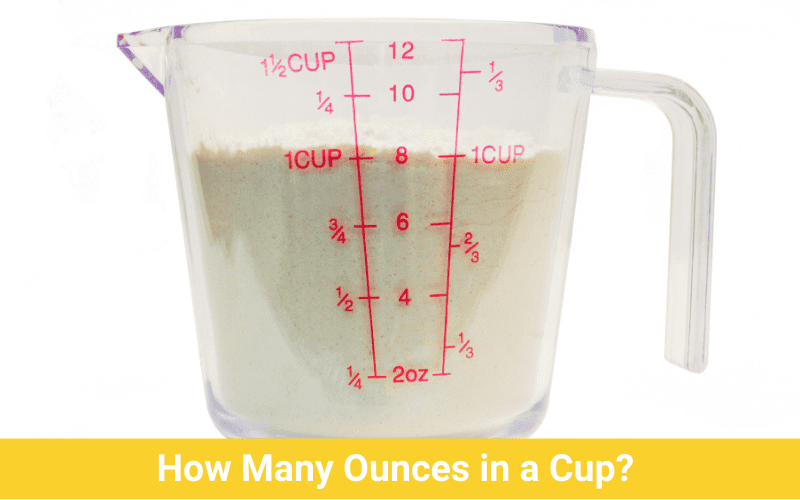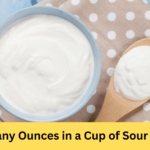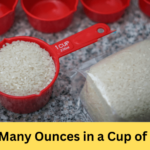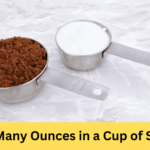“How many ounces in a cup” is a common question that arises when following a recipe, and for good reason. Accurately measuring ingredients is essential to the success of any recipe, whether you’re baking a cake, cooking a stew, or making a smoothie.
Understanding the basics of measuring cups and ounces, including different cup sizes, measuring accuracy, and conversions between units, can help ensure that your recipes turn out perfectly every time. In this article, we will delve into the world of measuring cups and ounces, providing comprehensive information to help you become a pro in the kitchen.
Whether you’re a professional chef, a seasoned home cook, or just starting out in the kitchen, understanding measurement units is a crucial aspect of cooking and baking. One of the most commonly used units of measurement in the kitchen is the cup, and knowing how many ounces per cup is essential for accurately following recipes.
In this comprehensive guide, we’ll explore the importance of understanding the conversion of cups to ounces and vice versa. We’ll cover different types of cups, measuring cups and their accuracy, and other important measurement units to help you become a more confident and successful cook.
Before we delve into the specifics, let’s take a brief look at the history of standard measurements. Standardized units of measurement date back to ancient civilizations, such as the Egyptians and the Babylonians. In the 18th century, the French revolutionized the metric system, which became the internationally recognized system of measurement.
However, in the United States, we still commonly use the Imperial system, which includes units such as ounces and cups. Understanding these units and their conversions is vital to ensure that your recipes turn out perfectly every time. So, let’s dive in and explore the ins and outs of cups and ounces.
Read more: How Many Ounces In A Quarter Cup?
How many ounces in a cup?
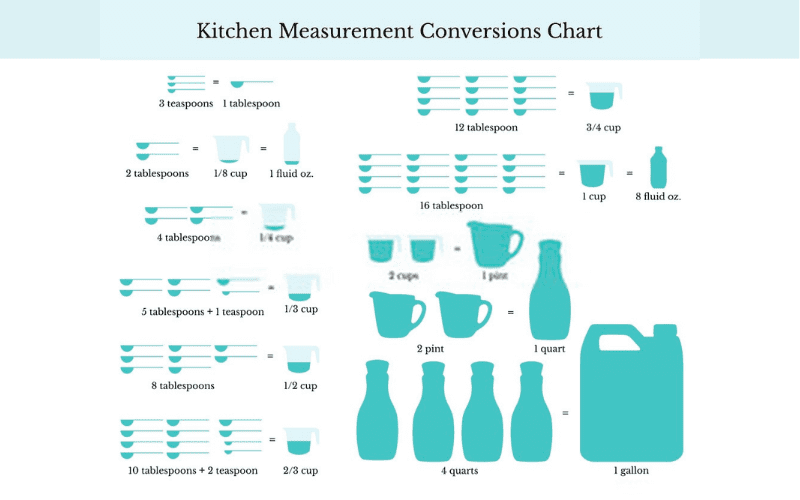
There are 8 fluid ounces in a cup. However, when measuring dry ingredients, such as flour or sugar, the weight may differ from the weight of liquid ingredients.
How many ounces in a cup of water?
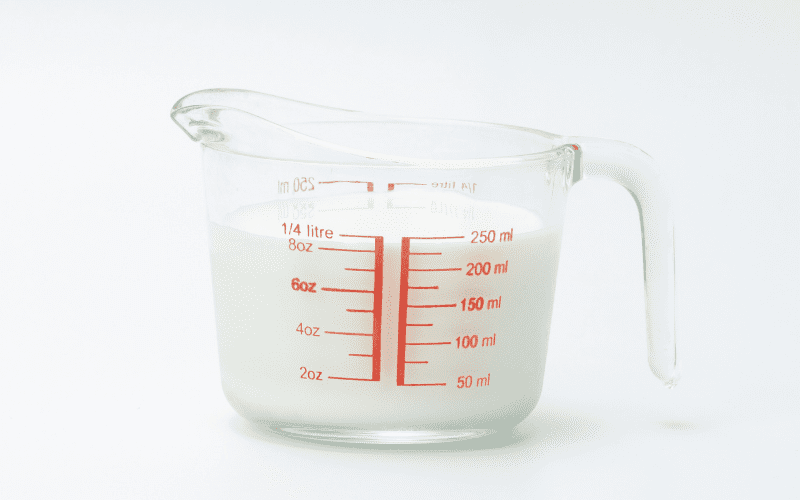
How many fluid ounces in a cup? There are 8 fluid ounces in a cup of water. This is the standard measurement used in the US customary system of measurement. It’s important to note that the number of ounces in a cup may vary depending on what you are measuring, such as dry or liquid ingredients. When measuring ingredients, it’s important to use the appropriate measuring tool and follow the guidelines for the specific ingredient being measured.
How many ounces in a cup of flour?
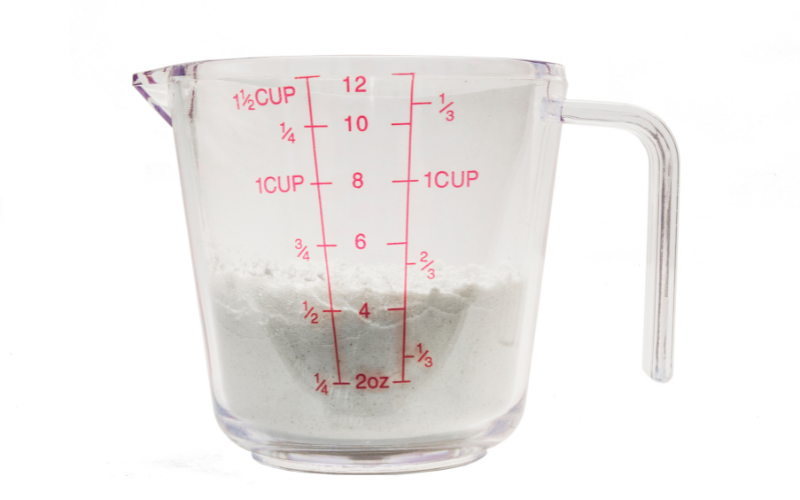
The number of ounces in a cup of flour can vary depending on how it is measured. Generally, one cup of all-purpose flour weighs approximately 4.5 to 5 ounces. However, the weight can vary based on factors such as how the flour is packed into the measuring cup and the brand of flour being used. To ensure accuracy when measuring ingredients, it’s best to use a kitchen scale or the scoop and level method to measure flour by volume.
So, how many cups is 8 oz? The answer depends on what you’re measuring. 8 fluid ounces is equal to 1 cup, while 8 ounces of a dry ingredient like flour is equal to approximately 0.9 cups.
Understanding the Basics
Before we delve into the specifics of measuring cups and conversions, it’s important to understand the basic units of measurement: ounces and cups.
An ounce is a unit of weight or mass, commonly used to measure the weight of small objects or ingredients. In the United States, there are two types of ounces: fluid ounces and dry ounces.
Fluid ounces are used to measure liquids, such as water, milk, or oil. One fluid ounce is equal to approximately 30 milliliters. In contrast, dry ounces are used to measure dry ingredients, such as flour, sugar, or spices. One dry ounce is equal to approximately 28.35 grams.
Cups, on the other hand, are a unit of volume commonly used in the kitchen to measure ingredients such as flour, sugar, and liquids. How many oz in a cup? A standard US cup measures 8 fluid ounces, or approximately 240 milliliters.
To convert fluid ounces to cups, simply divide the number of fluid ounces by 8. For example, 16 fluid ounces equals 2 cups. To convert cups to fluid ounces, multiply the number of cups by 8. For example, 3 cups equals 24 fluid ounces.
Read also:
Different Cups and Their Sizes
When it comes to measuring cups, there are various types and sizes available in the market. Here’s a brief overview of the most commonly used cups:
- Standard Measuring Cup: This type of measuring cup is used to measure both dry and liquid ingredients. It comes in various sizes, such as 1 cup, 1/2 cup, 1/3 cup, and 1/4 cup.
- Liquid Measuring Cup: This type of measuring cup is used specifically for measuring liquids, such as water, milk, or oil. It usually comes in larger sizes, such as 2 cups or 4 cups.
- Metric Measuring Cup: This type of measuring cup is used to measure ingredients in metric units, such as milliliters or liters. It usually has a different size and shape than standard measuring cups.
- Mason Jar: Although not a traditional measuring cup, a Mason jar can be used to measure ingredients in a pinch. Mason jars come in various sizes, such as pint and quart sizes.
It’s important to note that different types of cups may have different sizes, even if they have the same label. For example, a 1 cup measuring cup from one brand may be slightly different in size than a 1 cup measuring cup from another brand.
In addition, there is also a difference between standard and metric cups. Standard measuring cups are based on the US customary units of measurement, whereas metric cups are based on the metric system. One standard cup equals approximately 236.59 milliliters, while one metric cup equals exactly 250 milliliters.
Understanding the different types and sizes of cups, as well as the difference between standard and metric cups, can help you choose the right measuring cup for your recipe and ensure accurate measurements.
Measuring Cups and Their Accuracy
Measuring cups are an essential tool for any home cook or baker. They come in different types and sizes, and it’s important to understand their accuracy to ensure that your recipes turn out perfectly every time.
Measuring cups are designed to measure both dry and liquid ingredients. They typically have a spout for pouring and a handle for easy grip. There are two main types of measuring cups:
- Glass Measuring Cups: These are made of clear glass with markings on the side to indicate the measurement level. They are ideal for measuring liquids, but can also be used for dry ingredients.
- Plastic Measuring Cups: These are made of durable plastic and come in various sizes and shapes. They are ideal for measuring dry ingredients, but can also be used for liquids.
It’s important to note that measuring cups can be accurate only when used properly. Here are some tips for using measuring cups accurately:
- Always use the right size measuring cup for the ingredient you are measuring.
- For dry ingredients, use a spoon to scoop the ingredient into the measuring cup, then level off with a straight edge. Do not pack the ingredient down.
- For liquids, place the measuring cup on a flat surface and pour the liquid in slowly until it reaches the desired measurement level.
- Check the measurement level at eye level to ensure accuracy.
- Be mindful of the meniscus (the curve at the surface of a liquid in a container). Measure the liquid at the bottom of the meniscus to ensure accuracy.
By following these tips and using the appropriate measuring cup, you can ensure accurate measurements in your recipes and achieve perfect results every time.
Measuring Ingredients by Weight
While measuring cups are a common and useful tool for measuring ingredients, measuring by weight is a more precise method. Measuring by weight is especially important when it comes to baking, where even a small variation in ingredients can significantly affect the outcome of the recipe.
When we talk about measuring by weight, we’re referring to using a kitchen scale to weigh ingredients in grams or ounces. Unlike measuring cups, which measure ingredients by volume, weighing measures ingredients by mass. This is important because different ingredients have different densities and can vary in volume, even when measured in the same measuring cup.
For example, one cup of flour may weigh more or less depending on factors such as humidity or how it was packed. However, one ounce of flour will always weigh the same, regardless of how it was measured.
To use a kitchen scale, simply place your container on the scale and tare it to zero. Then add your ingredient until you reach the desired weight. Most digital kitchen scales have a range of units of measurement, including grams, ounces, and pounds.
Investing in a good kitchen scale is a worthwhile investment for any home cook or baker. It can help you achieve more consistent results in your recipes, especially when it comes to baking.
In summary, measuring by weight is important because it provides a more accurate measurement of ingredients than measuring by volume. By using a kitchen scale, you can ensure that your recipes turn out perfectly every time.
Converting Other Measurements to Cups
Now you knew how many ounces are in one cup, let take a look other measurements to cups
| Measurement | Amount | Cups |
|---|---|---|
| Tablespoons | 1 tbsp | 1/16 cup |
| 2 tbsp | 1/8 cup | |
| 4 tbsp | 1/4 cup | |
| 8 tbsp | 1/2 cup | |
| 16 tbsp | 1 cup | |
| Teaspoons | 1 tsp | 1/48 cup |
| 2 tsp | 1/24 cup | |
| 3 tsp | 1/16 cup | |
| 4 tsp | 1/12 cup | |
| 5 tsp | 1/10 cup | |
| 6 tsp | 1/8 cup | |
| 8 tsp | 1/6 cup | |
| 12 tsp | 1/4 cup | |
| 16 tsp | 1/3 cup | |
| 24 tsp | 1/2 cup | |
| 48 tsp | 1 cup | |
| Ounces | 1 oz | 1/8 cup |
| 2 oz | 1/4 cup | |
| 4 oz | 1/2 cup | |
| 8 oz | 1 cup | |
| Pints | 1 pint | 2 cups |
| Quarts | 1 quart | 4 cups |
| Gallons | 1 gallon | 16 cups |
Tips for making conversions accurate:
- Always use the appropriate measuring tool for the ingredient you are converting.
- Ensure that your measuring cups and spoons are level and accurate.
- Double-check your measurements to ensure accuracy.
- When converting from larger units to smaller units, use fractions or decimals to ensure precision.
- When converting from smaller units to larger units, round to the nearest larger measurement.
Baking with Cups and Ounces
Accurate measuring is crucial when it comes to baking. Even a small variation in ingredients can significantly affect the texture, flavor, and overall outcome of your baked goods. Here’s what you need to know about using cups and ounces in baking:
Baking is a science, and accurate measurements are essential to ensure that your baked goods turn out perfectly every time. This is especially important when it comes to ingredients such as flour, sugar, and leavening agents, which can affect the texture and rise of your baked goods.
Tips for measuring flour, sugar, and other ingredients:
- Fluff the flour or sugar with a fork before measuring it to prevent it from being packed down in the measuring cup.
- Use a spoon to scoop the flour or sugar into the measuring cup, then level off with a straight edge.
- When measuring liquids, place the measuring cup on a flat surface and pour the liquid in slowly until it reaches the desired measurement level.
- Be mindful of the meniscus (the curve at the surface of a liquid in a container). Measure the liquid at the bottom of the meniscus to ensure accuracy.
Here are some common baking recipes and their measurements in cups and ounces:
- Chocolate chip cookies: 2 1/4 cups flour, 1 cup butter (8 oz), 1 cup brown sugar (7 oz), 1/2 cup granulated sugar (3.5 oz), 2 cups chocolate chips (12 oz)
- Banana bread: 2 cups flour, 1 cup mashed bananas (8 oz), 1/2 cup butter (4 oz), 1 cup sugar (7 oz), 2 eggs, 1 tsp baking soda
- Brownies: 1 1/4 cups flour, 1 cup sugar (7 oz), 1/2 cup butter (4 oz), 1/2 cup cocoa powder (2 oz), 2 eggs, 1 tsp vanilla extract
Using Cups and Ounces for Cooking
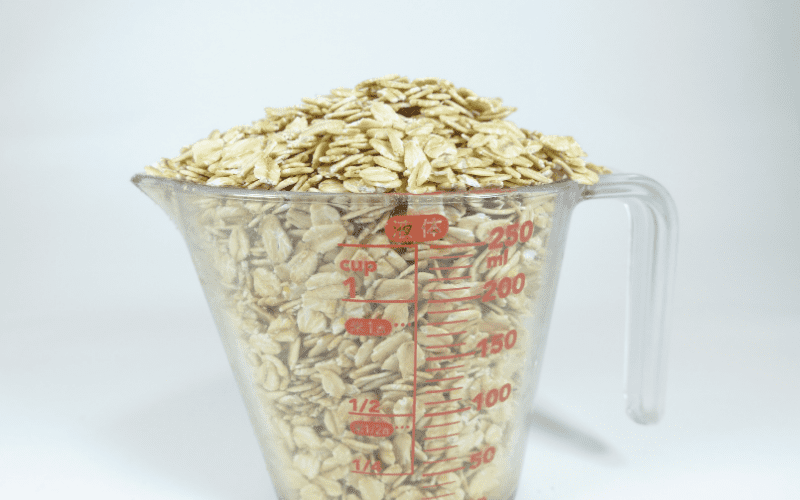
Accurate measurements are just as important in cooking as they are in baking. While cooking is often more forgiving than baking, even small variations in ingredients can significantly affect the flavor and texture of your dishes.
Tips for measuring liquids, spices, and other ingredients:
- Use a liquid measuring cup for liquids, such as water, milk, or oil.
- Place the measuring cup on a flat surface and pour the liquid in slowly until it reaches the desired measurement level.
- For spices, use a measuring spoon and level off with a straight edge.
- For ingredients such as cheese or vegetables, use a kitchen scale to weigh them for more accurate measurements.
Common cooking recipes and their cup and ounce measurements:
- Spaghetti sauce: 1 can (28 oz) crushed tomatoes, 1/2 cup onion (2 oz), 1/4 cup olive oil (2 oz), 2 cloves garlic, 1 tsp salt, 1 tsp sugar
- Fried rice: 2 cups cooked rice, 1/2 cup peas (3 oz), 1/2 cup carrots (2 oz), 1/4 cup soy sauce (2 oz), 2 tbsp sesame oil, 2 eggs
- Chicken stir-fry: 1 lb chicken (16 oz), 1/2 cup broccoli (2 oz), 1/2 cup carrots (2 oz), 1/2 cup bell peppers (2 oz), 1/4 cup soy sauce (2 oz), 2 tbsp cornstarch, 1 tsp ginger
Understanding Metric Units
In addition to the commonly used US customary units of measurement, the metric system is widely used throughout the world. The metric system uses units such as grams, milliliters, and liters to measure weight, volume, and length. Here’s what you need to know about understanding metric units:
The metric system is based on units of ten, making it easy to convert between different units of measurement. For example, there are 1,000 milliliters in a liter, and 1,000 grams in a kilogram.
To convert metric units to cups and ounces, you’ll need to use a conversion chart or calculator. Here are some common metric to US customary unit conversions:
- 1 liter = 4.227 cups
- 500 milliliters = 2.113 cups
- 250 milliliters = 1.057 cups
- 100 grams = 3.527 ounces
- 50 grams = 1.764 ounces
- 25 grams = 0.882 ounces
Comparison of metric and imperial units:
The metric system is often seen as simpler and more intuitive than the US customary units of measurement. Because the metric system is based on units of ten, it’s easy to convert between different units of measurement. In contrast, US customary units can be more complex and less intuitive, with conversions based on factors such as 16 or 12.
However, the US customary units are still widely used in the United States, particularly in cooking and baking. It’s important to understand both systems of measurement to be able to follow recipes accurately.
Cups and Ounces in Other Countries
While the US customary units of measurement are widely used in the United States, other countries use different systems of measurement. Here’s what you need to know about measurement systems used in other countries:
Overview of measurement systems used in other countries:
- Metric System: The metric system is the most widely used system of measurement worldwide. It uses units such as grams, milliliters, and liters to measure weight, volume, and length. The metric system is used in most countries, including Canada, Australia, and European countries.
- Imperial System: The Imperial system is a system of measurement that originated in England and is still used in some countries, such as the United Kingdom. The Imperial system uses units such as pounds, ounces, and gallons to measure weight, volume, and length.
- Customary System: Some countries, such as India and Pakistan, use their own system of customary units of measurement. These systems vary in their units and may be influenced by local traditions.
Comparison of US and International Standards:
While the US customary units of measurement differ from the metric system and Imperial system used in other countries, there are efforts to create a standardized global system of measurement. The International System of Units (SI) is a globally recognized system of measurement that is based on the metric system. It includes seven base units of measurement, including the meter, kilogram, and second.
In conclusion, understanding measurement systems used in other countries can be helpful when following international recipes or traveling abroad. While different countries may use different systems of measurement, efforts are being made towards a standardized global system of measurement.
Understanding Nutrition Labels
Nutrition labels are found on most packaged foods and provide important information about the nutritional content of the food.
Nutrition labels provide information about the serving size, calories, and nutrient content of the food. They also include information about the amounts of nutrients such as fat, cholesterol, sodium, and protein. Additionally, nutrition labels often include information about the percent daily value (%DV) of each nutrient, which can help you determine if a food is high or low in a particular nutrient.
One important aspect of nutrition labels is the serving size. The serving size is the amount of food that is considered one serving and is used to calculate the nutrient content and calories of the food. The serving size is typically listed in a standard measurement such as cups or ounces, making it easy to compare similar foods.
It’s important to note that the serving size listed on the nutrition label may not be the same as the amount of food that you actually consume. For example, if the serving size for a bag of chips is 1 ounce (28 grams) and you consume 2 ounces (56 grams), you’ll need to double the nutrient content and calories listed on the label.
FAQs
How to convert nutrition information to Cups and Ounces?
While nutrition labels typically list serving sizes in grams or ounces, it’s possible to convert the information to cups and ounces for easier understanding. To convert grams to ounces, divide the number of grams by 28. To convert milligrams to ounces, divide the number of milligrams by 28,000. To convert ounces to cups, divide the number of ounces by 8.
Can you measure ounces in a cup?
Yes, you can measure ounces in a cup. However, it’s important to note that the number of ounces in a cup can vary depending on what you are measuring. For example, one cup of water is equal to 8 fluid ounces, while one cup of flour may weigh 4.5 to 5 ounces. When measuring by weight, it’s important to use a kitchen scale to ensure accuracy. When measuring by volume, it’s important to use the appropriate measuring tool and follow the guidelines for the specific ingredient being measured.
How many ounces in half a cup?
There are 4 fluid ounces in a half cup. This is a standard measurement used in the US customary system of measurement. However, it’s important to note that when measuring dry ingredients, such as flour or sugar, the weight may differ from the weight of liquid ingredients. For example, a half cup of all-purpose flour weighs approximately 2.25 to 2.5 ounces, while a half cup of granulated sugar weighs approximately 3.5 ounces. To ensure accuracy when measuring ingredients, it’s important to use the appropriate measuring tool and follow the guidelines for the specific ingredient being measured.
Is a coffee cup equal to a measuring cup?
No, a coffee cup is not equal to a measuring cup. A standard coffee cup typically holds 6 to 8 fluid ounces, while a measuring cup used in cooking and baking is typically marked with measurements for both fluid ounces and dry ounces. Measuring cups are designed to provide accurate and consistent measurements for ingredients, while coffee cups are designed for serving hot beverages. When following a recipe, it’s important to use the appropriate measuring tools to ensure accuracy and success in your cooking and baking endeavors.
How many ounces are in a pint?
There are 16 fluid ounces in a pint. This is a standard measurement used in the US customary system of measurement. It’s important to note that a pint can also refer to a unit of weight, such as a pint of strawberries, which typically weighs 12 to 16 ounces. When measuring ingredients, it’s important to use the appropriate measuring tool and follow the guidelines for the specific ingredient being measured.
How many ounces are in a quart?
There are 32 fluid ounces in a quart. This is a standard measurement used in the US customary system of measurement. It’s important to note that a quart can also refer to a unit of weight, such as a quart of strawberries, which typically weighs 24 to 32 ounces. When measuring ingredients, it’s important to use the appropriate measuring tool and follow the guidelines for the specific ingredient being measured.
Can you use a liquid measuring cup for dry ingredients?
While you can technically use a liquid measuring cup for dry ingredients, it’s not recommended. Liquid measuring cups are designed to measure liquids accurately by allowing you to fill the cup to the appropriate level. Dry measuring cups, on the other hand, are designed to measure dry ingredients by filling the cup to the top and then leveling off with a straight edge.
Using a liquid measuring cup for dry ingredients can lead to inaccurate measurements, as the cup may not be filled to the correct level or the ingredients may settle unevenly in the cup. To ensure accurate measurements, it’s best to use the appropriate measuring tool for the specific ingredient being measured.
How do you measure ounces without a scale?
If you don’t have a kitchen scale, there are a few ways to measure ounces using common kitchen tools:
- Measuring Cups: Measuring cups can be used to measure both liquid and dry ingredients by volume. For example, one cup of all-purpose flour weighs approximately 4.5 to 5 ounces.
- Measuring Spoons: Measuring spoons can be used to measure small amounts of ingredients, such as spices or baking powder. For example, one tablespoon of baking powder weighs approximately 0.5 ounces.
- Water Displacement: Water displacement can be used to measure the volume of small objects, such as nuts or berries, to estimate their weight in ounces. To do this, fill a measuring cup with a known amount of water, then add the object to the water and measure the new water level. The difference in water level can be used to estimate the weight of the object in ounces.
While these methods may not be as accurate as using a kitchen scale, they can be helpful for estimating ingredient amounts when a scale is not available.
What is the difference between fluid ounces and ounces?
The main difference between fluid ounces and ounces is that fluid ounces are used to measure volume, while ounces are used to measure weight.
Fluid ounces are typically used to measure liquids, such as water, milk, or juice. One fluid ounce is equal to approximately 29.6 milliliters. In the US customary system of measurement, there are 8 fluid ounces in a cup, and 128 fluid ounces in a gallon.
Ounces, on the other hand, are typically used to measure weight, such as the weight of ingredients like flour, sugar, or meat. One ounce is equal to approximately 28.35 grams. In the US customary system of measurement, there are 16 ounces in a pound.
It’s important to note that while fluid ounces and ounces are both used to measure quantity, they cannot be used interchangeably. When following a recipe, it’s important to use the appropriate measuring tool and follow the guidelines for the specific ingredient being measured.
How many ounces are in a gallon?
There are 128 fluid ounces in a gallon. This is a standard measurement used in the US customary system of measurement. A gallon is often used to measure liquids such as milk, water, or gasoline. When measuring smaller quantities, it’s common to use fractions or multiples of a gallon, such as quarts, pints, or cups. When measuring ingredients, it’s important to use the appropriate measuring tool and follow the guidelines for the specific ingredient being measured.
How do you measure liquid ounces?
To measure liquid ounces, you will need a liquid measuring cup. These cups are specifically designed to measure liquids accurately. Here’s how to use a liquid measuring cup to measure fluid ounces:
- Place the measuring cup on a flat surface and pour the liquid into the cup.
- Make sure the liquid is level with the appropriate line on the measuring cup. The measurement lines on the cup will indicate fluid ounces, with each line representing a specific amount of fluid ounces.
- If the liquid is not level with the appropriate line, use a spoon or a spatula to remove or add liquid until the level matches the desired measurement.
- Once the liquid is level with the appropriate line, read the measurement in fluid ounces.
It’s important to note that when measuring liquids, it’s important to use a liquid measuring cup and not a dry measuring cup, as the measurements for the two types of cups are not the same. Also, be sure to measure liquids at eye level to ensure accuracy.
Conclusion
Understanding how many ounces in a cup is an important aspect of cooking and baking. While the US customary system of measurement is widely used in the United States, other countries use different systems of measurement.
It’s important to use the appropriate measuring tool and follow the guidelines for the specific ingredient being measured, whether measuring by volume or weight.
When following a recipe, it’s important to pay attention to serving sizes and to use the appropriate measuring tool for the specific ingredient being measured.
Having a solid grasp of the fundamentals of measuring cups and ounces, such as recognizing various cup sizes, achieving precise measurements, and converting between units, can help guarantee your culinary creations come out flawlessly every time.

